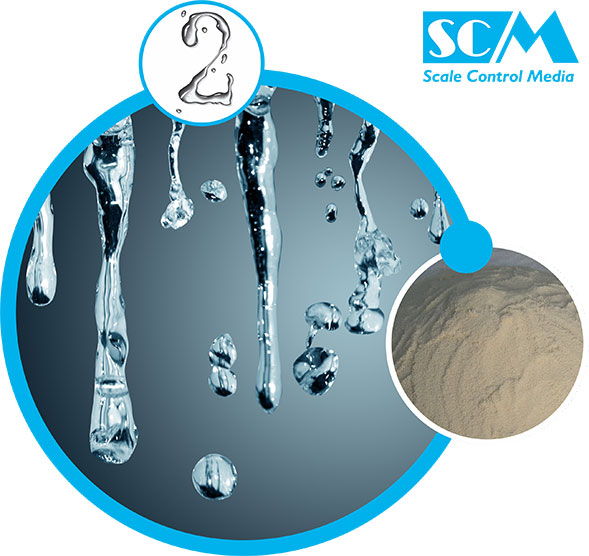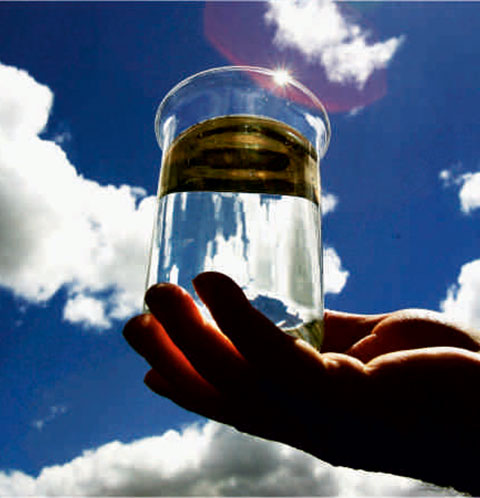+91 98241 31339 298wmc@gmail.com
For years, water softeners have been virtually the only means of treating hard water. Other alternatives including magnets, electro-magnets, RF devices and catalysts have been available but few have proven to be effective.
SCM is not a water softener, but it has all the advantages of a water softener without the disadvantages and the water feels and acts like soft water. The SCM is more economical and has other benefits that a water softener does not have. Salt softeners have many limitations in commercial and industrial applications which are well recognized and understood. SCM can provide the protection needed without the restrictions associated with salt softener systems. We are not claiming that SCM media remove raw water hardness.
Technology behind SCM:
Template Assisted Crystallization (TAC). Transformation of Calcium and Magnesium hardness into non-soluble micro crystals is the fundamental of these unique products. The formed crystals provide essential minerals to the water making it healthy water available. SCM doesn't add up any sodium in the water like conventional softeners.
SCM is replacement for the conventional sodium based water softeners, ion-exchange resins or other chemicals, those are only partially maintain & functions at the const of the environment & health. Increased sodium content in water or decreased pH factor (making water acidic) directly influence the health problems, environmental damage and damage to the systems those are vulnerable to chemical corrosion due to sodium.

Working Principle of SCM Media:
When the hard water under goes nucleation in the pressure vessel, the calcium bicarbonate Ca(HCO3)2 is transformed in form of calcium carbonate CaCO3 Crystals, These crystals are formed through decomposition and crystallization process, forming very stable harmless crystals.
The following equation describes the reaction that occurs inside the pressure vessel when flow over grains of nucleation.
Ca(HCO3)2 + SCM --> CaCO3 + CO2 ↑ H20(Dissolved) (Nano Crystal) (Gas) (Liquid)
In the pressure vessel, the equilibrium OF carbonate species in water is shifted, assisted by the driving force of stable crystal formation and therefore the reaction is pushed to the right. With this technology, as long as CO2 is being removed the soluble Ca(HCO3) converts into soluble calcium carbonate (CaCO3) crystals.
The calcium carbonate crystals grow steadily. They are very stable and cannot dissolve (incapable of forming scale) in the water.

Scale Prevention SCM Benefits:
- Chemicals Free Scale Prevention. Cost savings and environmental benefits.
- Virtually Maintenance Free. No salt bags or other chemicals to buy transport and store.
- No Electricity, no wastewater, completely self-contained.
- Improves the efficiency of water-using appliances.
- Simple installation-no electrical and drain hook-up.
- Safe for landscaping and lawn watering. No need for costly bypass plumbing.
- Compatible with all on-site and community wastewater treatment systems.
- Not subject to water softener restrictions and "bans".
- SCM treated water has no added sodium, is safe to drink and is well suited for use in food and beverage preparation.
Technical Data: Characteristics:
Appearance: White granules
Bulk weight (g/L): 0.750
Change in volume: up to 60%
Composition: Ceramic modified Polymer
Particle size (mm): 0.55 - 0.75
Moisture content: 10-25%
Operational Parameters & Water Impurities:
Operating temperature ( C) : 3 to 90
Hardness, max. ppm : 1200
Iron, max.ppm: 0.3
Free chloring, max. ppm : 1.5
Oil : free
Phosphates: free
pH range: 6.5 to 9.5
Manganese, max. ppm : 0.05
Copper, max. ppm: 1.3
Hydrogen sulfide : free
Lifespan of the Media:
The effective average lifespan of SCM is 2 to 3 years, depending on the water conditions.
How Much Quantity of SCM Media Needed?
The quantity of SCM required to treat I cu. m/hr flow rate of water is 3 litres for 400 ppm to 1200 ppm hardness. The size of the pressure vessel is around7-10 times the quantity of the media used. The system has to work under pressure which means it should be fitted in the pump line below the storage tank and preferable before the application area for the best result.

Maintenance
SCM replacement media cost less than the annual salt bill for a system of similar size, and change out periods can be as little as every 2 to 3 years.
Application
SCM has proven itself in a variety of applications as an alternative to ion exchange softening or other conventional water treatment methods. The maintenance-free characteristics make it especially suited for food service and commercial applications where equipment maintenance is often overlooked. SCM is a great alternative for residential use, especially in areas with where brackish water makes it impossible to operate a conventional softener.
1) Food Service
Coffee & Tea Brewers
Espresso Machines
Steamers & Proofers
Dishwashing
2) Commercial / Industrial
Car Washes
Evaporative Coolers (Single-pass)
Laundries
Hotels, Hospitals, Apartments
3) Residential
Laundary - reduced soap usage, cleaner clothes.
Dishwasher - reduced soap usage, less spotting, no scale formation.
Water Heater - Complete protection from scale upto max. 60 C.
Drinking Water - beneficial minerals are retained, no sodium or other chemicals added to water.
Major Advantages Our Ion Exchange Based Softener
In Industrial processes, disposal of brine from the regeneration and backwashing of ion exchange water softeners is becoming an ever bigger problem. Water companies are seeing an increase in TDS (Total Dissolved Solids) in waste water and many companies are tankering brine off site for disposal. Add to that the cost of salt and the thousands of cubic meters used in backwashing and is easy to identify the savings achievable by using SCM to protect your plant. The return on investment is typically less than a year, and operational costs year after year following installation show significant reductions.
We don't make any claims about having a magic bullet, but we do have a proven alternative to ion exchange softeners and with it, a much broader range of protection opportunities.
Typically, capital cost is no more than salt softener systems, but operational costs are much lower. In commercial and Industrial systems, media is normally changed after 2 to 3 years (depending on system size) and requires no regular maintenance, topping up, regeneration or backwashing. The cost of a media change is substantially less than using salt.